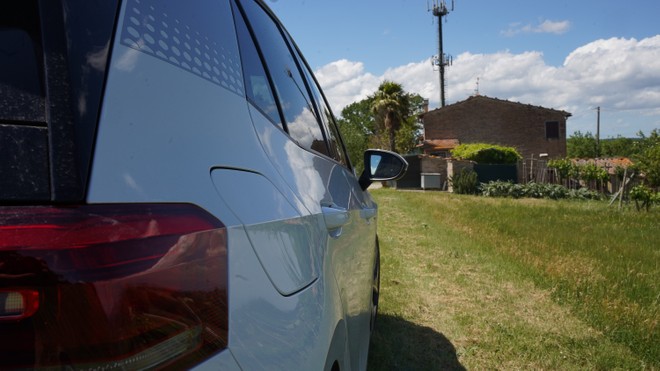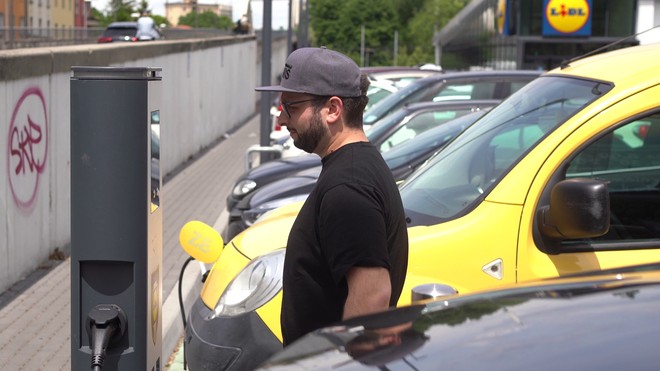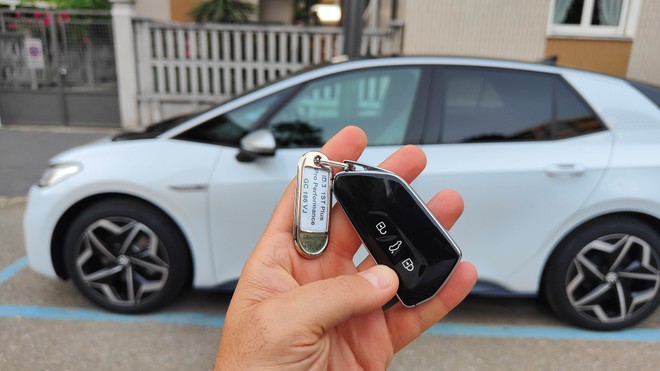Another electric car, another race. When on a warm May afternoon a Volkswagen ID.3 crossed the courtyard of ours? editorial staff, kindly granted on trial by the Verona headquarters, a shiver of excitement shook a large part of the team in unison. After all? If? An electrical challenge beckons,? difficult to back down and? who has already? following our adventures sa? che? se con Estrima Bir? Did we manage to get to Vigevano, with a real car? We would have been able to do much worse.
With the map in hand, our choice of destination? relapse on Rome , but since there is no competition without ambitious goals, with their set of obstacles and unexpected events, to make our itinerary even more? stimulating we have decided to recharge our car? using, listen, listen, not the network of public columns? for a fee? located on? a good part of the national territory, but a source of electrons a zero cost .?
No, I'm clearly not talking about the Schuko stolen from the housewives in the middle of the boot, nor about the Tesla superchargers, pillars of a dense ecosystem exclusive use of the? customers of the brand,? but of the infrastructures located in the parking lots of some large? shopping centers, supermarkets or other businesses? receptive. Iper ,? Decathlon , Tigros , Esselunga , Ikea , Eurospin and Lidl are some of the names of large companies that offer this service in many of their stores, not so much to encourage mobility. electric? how much to attract customers who, between one charging pause and the next, get on the truck, combining business with profit.
The protagonist of our electric challenge is a Volkswagen? ID.3 1st Plus of 150 kW (204 HP) with 58 kWh battery that accepts two modes? charging: the one in alternating current AC (Mode 2 and Mode 3), with a Type2 connector, and the one in direct current DC (Mode 4) with CCS Combo2 standard. For a more acquaintance? in-depth analysis of the model, we suggest you rely on? Luigi's test? a few months ago.
THE DIARIES OF ELECTRICS 

Our first stop? been Bologna, easy stop and go about 200 kilometers from the starting point, where we had already? intercepted some free refueling stations. In order not to go blind, we have in fact made a quick selection of the free recharge stages by initially focusing on Lidl , which has a rather widespread network of points of sale. In Bologna there are six, all in peripheral areas but easily reachable from the motorway, and in one of them there are even two fast multistandard columns that have become our lifeline. Too bad that, once we arrived at our destination, we had to find with great regret that they were not working.
After a change of direction in search of another store, which like most Lidl stores hosts? columns with double Type 2 socket that delivers up to 22 kW in AC (in some cases the power is limited to 11 kW) and a quick lunch while waiting to reach “full”, we opted for a very risky? pull up to Orvieto, about 260 kilometers away.

 Volkswagen ID.3: road test, consumption 58 kWh and considerations | Video 474
Volkswagen ID.3: road test, consumption 58 kWh and considerations | Video 474
Auto Oct 29

 Volkswagen ID.4: real consumption, autonomy, price and road test | Video 281
Volkswagen ID.4: real consumption, autonomy, price and road test | Video 281
Auto 19 Apr
Cruise control set at 110? Km/h to avoid ruinous drops in autonomy (between 110 and 130 km/h there is an abyss in terms of consumption), 50 shades of Tuscan green, a questionable soundtrack (Francesco and I have irreconcilable musical tastes)? but commendable comfort? because, it must be said, in the ID.3 you are really comfortable, especially behind. After three hours of travel? And many fewer battery notches, see in the distance the sparkle of the Eurospin sign silhouetted against the leaden sky ?? pure enjoyment.
The charging power of the columns in the discount parking lot? the same? of the Lidl infrastructureand fortunately, contrary to what happened in the Emilian capital, no obstacles are there? between us and the coveted supply. After a couple of hours we had the battery at an acceptable charging point for the final sprint to the capital.
At the end of the day, with about 600 kilometers traveled, over 10 hours of travel, two stages recharging ( including various grind-autonomy wanderings), 140? kWh consumed and? 78? kWh recharged ,? the forward path of our electric challenge? finally come to an end. “And never like that evening, when” via Salaria led us to the city in a twilight light with a mystical face, “we finally understood the meaning of the saying” See Rome then die “. Literally.Not ? certainly it ended here: from Rome, after a day off and one day of work, we obviously had to return. I do not deny that I was tempted to abandon my companions in (dis) adventure and get on the first Frecciarossa towards Milan-Central or to hitchhike only appealing to petrol or diesel cars (just kidding).
Understand me: during our “Roman holidays”? I developed a rare form of autonomy phobia, to put it in English? “range anxiety”, made even less bearable by the aggravating circumstance of free as a mandatory requirement of our challenge. Without a wall box or a “domestic socket” to attach the car to in the garage during the night (or even just the possibility of “breaking through” with the pay columns), I would say that the opposite would have been anomalous. Fortunately, between Ikea and other Lidl , the Capitoline stay in the end yes? proved sustainable also from the point of view of energy loading.
All very nice, but c '? a for ?: if? true that? ours? was a risky choice, ?? just as true as traveling – even for long journeys – with your own electric car by recharging it? thanks? to the classic energy supply options? proposed by the various? sector operators? feasible and, in some cases, also very convenient.?Enel X ,? BeCharge , A2A, Ionity : the names are many, the that make up their infrastructural network? even more.?
TRAVELING COLUMNS 

There remains, however,? The problem of the shortage of? Electric columns? Along the motorway section, which should soon be resolved? Thanks to an amendment of the? = “”> Budget Law of 2021 ? Which provides for the installation of a fast charging station every 50 kilometers on the motorway. the? maxi plan of? Autostrade per l'Italia , which fits into this context and which should? lead to the opening of ? 67 recharging points ? on the motorway network (with? 4 or 6 columns each) in the service areas with power up to 350 kW (the first station has recently seen the light? on the Autostrada del Sole in the Modena area and in the area? Flaminia Est north of Rome). There? it means that, every 90 kilometers approximately, it will be? possible to have an ultra-fast charging in direct current in 15-20 minutes.?
Another observation? pi? what a duty: during our electric Odyssey? we realized? that? most? of the rapid columns? are located in? suburbs? or in semi-deserted industrial areas, far from historical centers of cities. This fact, in addition to displeasing the? Owners of electric cars with little time available,? Discouraged tourism from “recharging” that we – if we had not had to rely on the free network – would have gladly practiced, filling the time of waiting with a cultural tour or with activities? alternatives to mere department store shopping.
The heart of a? City? how Rome should have many more? fast energy refueling stations, not to mention the center of Florence, where they can hardly be found. I will tell you? more: in the case of the Tuscan capital,? even difficult to find the standard 22 kW ones. from 3 kW, which means spending almost 20 hours of your time waiting for the car to recharge from 0 to 100%.?
COSTS 

As already stated, the refueling of our trip? been completely free. Something that, when the games are finished, a pinch of pride instills him.? But if it had been for a fee, how much would we have spent? The Milan-Rome journey traveled by an electric car with an autonomy of up to 385 km should cost between 50 and 120 euros . Of course, it depends on the type of vehicle used, the initial range and the charging stations. To make an estimate, just consider a price of 0.45-0.50 euros per kWh , multiplying the figure by the average energy consumption of the car.
In our case,? the average consumption of the Volkswagen ID.3? been about? 20 kWh/km , with a cost of about? 57 ? euro one way (excluding motorway toll booths).
VIDEO
A computer inside a smartphone? Motorola Moto G100, buy it at the best price from ePrice at 485 euros .

